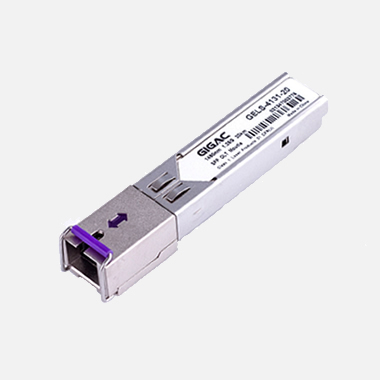Products Description
The SFP+ XGS-PON ONU Optical Module is a high-speed, miniaturized fiber optic module specifically designed for XGS-PON (10G Symmetric Passive Optical Network) ONU (Optical Network Unit) applications. Featuring the SFP+ (Small Form-factor Pluggable Plus) packaging format, it offers high performance, reliability, and cost-effectiveness.
The primary function of this optical module is to perform optical-to-electrical and electrical-to-optical conversions. On the transmit side, it converts electrical signals into optical signals for transmission through fiber optic cables, while on the receive side, it converts incoming optical signals back into electrical signals. This enables the efficient transmission of high-speed data within fiber-optic networks.
The SFP+ XGS-PON ONU Optical Module excels in supporting high-bandwidth applications, meeting the ever-increasing demands for network bandwidth. It utilizes advanced laser and detector technology to ensure stable and accurate signal transmission. Additionally, the module incorporates various protection features, such as temperature monitoring and power control, to ensure the stable operation of the network.
In terms of application scenarios, the SFP+ XGS-PON ONU Optical Module is widely used in fiber access networks, providing users with high-speed and stable internet access services. It supports multiple network protocols and service types, catering to the diverse needs of users. Furthermore, the module offers flexible configuration and scalability, allowing for adjustments based on changes in network size.
Overall, the SFP+ XGS-PON ONU Optical Module, with its high performance, reliability, and cost-effectiveness, provides robust support for the construction and upgrading of modern communication networks. It not only enhances network bandwidth and performance but also reduces the cost of network construction and maintenance, delivering a superior network experience to users.
The SFP+ XGS-PON ONU Optical Module boasts a range of impressive features that make it a standout choice for modern communication networks. Here are some of its key characteristics:
Support for XGS-PON ONU 20km Application: This module is specifically designed to support XGS-PON ONU applications over distances of up to 20 kilometers, ensuring reliable and high-speed data transmission over long distances.
1270nm Burst-Mode Transmitter with DFB Laser: The module's transmitter utilizes a 1270nm DFB (Distributed Feedback) laser for burst-mode operation. This enables efficient and stable optical signal transmission, critical for high-speed data transmission in XGS-PON networks.
1577nm Continuous-Mode Receiver with APD-TIA: The receiver incorporates a 1577nm continuous-mode design with an APD-TIA (Avalanche Photodiode - Transimpedance Amplifier). This combination ensures high sensitivity and low noise, enabling accurate and reliable reception of optical signals.
Compliant with ITU-T XGS-PON G.9807.1: The module adheres to the ITU-T XGS-PON G.9807.1 standard, ensuring compatibility and interoperability with other XGS-PON network components.
Compliant with SFP+ MSA SFF-8431: Compliance with the SFP+ MSA SFF-8431 standard ensures that the module meets the industry's specifications for mechanical, electrical, and optical interfaces, ensuring seamless integration into existing network infrastructure.
Compliant Digital Diagnostic SFF-8472: The module supports the SFF-8472 digital diagnostic interface, providing real-time monitoring and management capabilities. This allows network administrators to monitor the module's performance and troubleshoot any issues promptly.
Single 3.3V Power Supply: The module requires a single 3.3V power supply, simplifying power management and reducing the overall cost of ownership.
Simplex SC/UPC Connector Bi-directional: The module features a simplex SC/UPC connector that supports bi-directional transmission, enabling efficient use of fiber optic cables and reducing the need for additional hardware.
Commercial and Industrial Temperature Available: The module is available in both commercial and industrial temperature ranges, ensuring reliable operation in various environments.
RoHS Compliance: The module adheres to RoHS (Restriction of Hazardous Substances) compliance, ensuring that it does not contain any harmful substances and is environmentally friendly.
Order Information
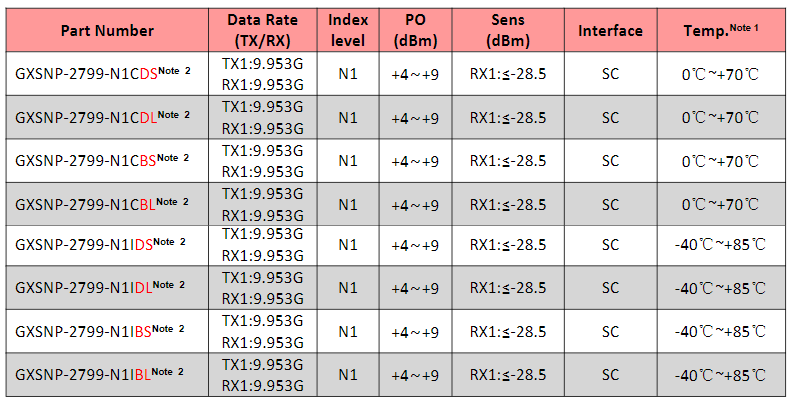
Note:
The Temp refers to the Operating Case Temperature Range, indicating the suitable ambient temperature range for the optical module to operate effectively and reliably. It ensures that the module can function properly under various environmental conditions.
The transmitter optical output has two detection modes: B and D. In mode B, the transmitter optical output is closed when Tx-EN is 0 (closing the laser) or open when Tx-EN is 1 (opening the laser). This mode allows for precise control of the laser's operation. In mode D, the behavior is reversed; the transmitter optical output is closed when Tx-EN is 1 (closing the laser) or open when Tx-EN is 0 (opening the laser). This flexibility enables the module to adapt to different network requirements.
Our factory
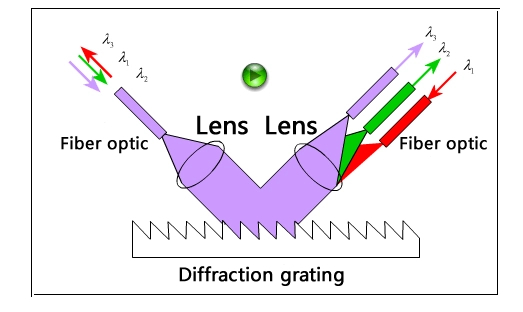
Wavelength Divisio···
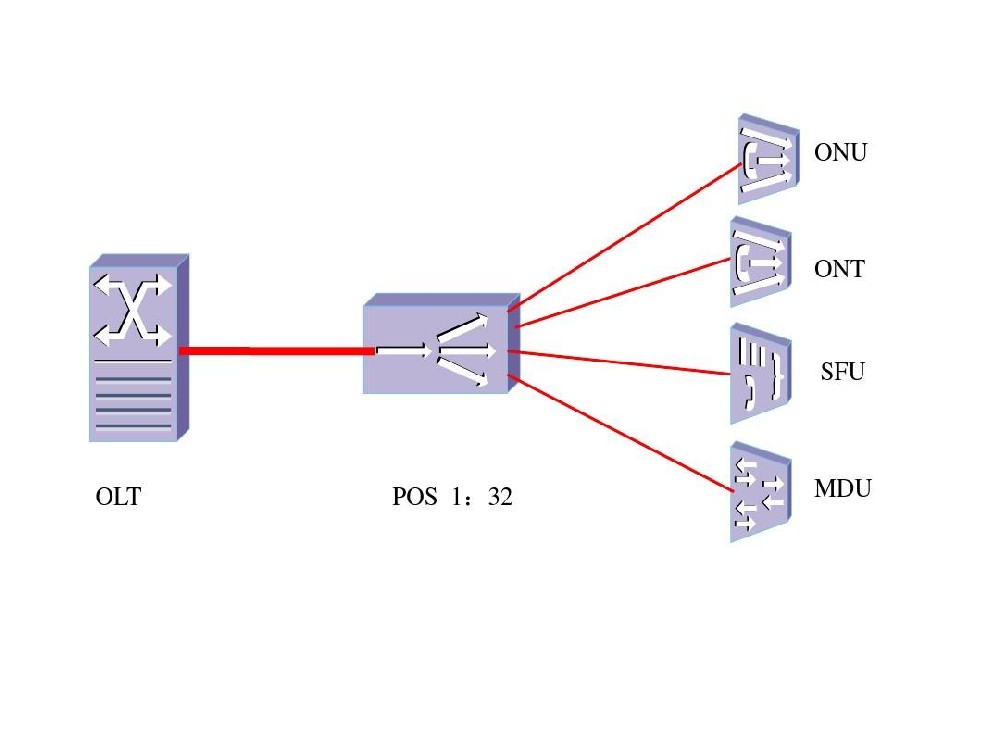
Detailed Explanati···
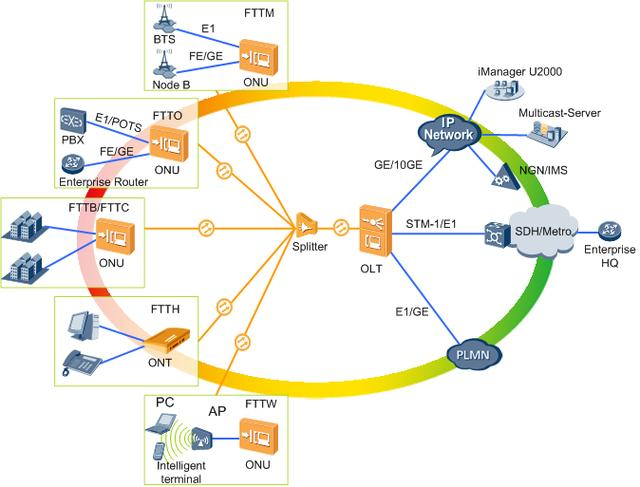
The Working Princi···

The Key Difference···
Hot Tags:
R&D laboratory
Gigac has introduced numerous precision testing equipment, such as Ixia XGS12, Ixia WaveTest 93, Anritsu, Fujikura, Fluke, JDSU, Agilent, EXFO, DATA-PIXEL, etc., for product development testing and validation.At present, there are over 100 professional engineers, of which 50% are senior engineers. Through standardized testing processes and in line with international professional testing standards, we provide testing in various aspects such as product appearance, performance, compatibility, and solution scenarios to meet the diverse testing needs of global customers.
Numerous research and development achievements
Gigac adopts a research and development model that combines independent research and joint development, and has achieved outstanding results in industrial design and product software and hardware research and development.As data centers continue to expand and grow, a well planned cabling infrastructure is crucial. Without flexible cabling plans that can easily adapt to common moves, additions, and changes, your network growth will be limited. The Gigac series high-density data center cabling solutions can simplify deployment, enabling up to 144 LC fibers in 1U, and enabling flexible expansion and rapid upgrades with increasing business traffic demands.
Gigac Test Center
Gain a comprehensive understanding of Gigac's optical modules, fiber optic jumpers, and enterprise network testing center. We have a comprehensive testing plan, professional testing equipment, and standard testing procedures. We regularly test optical modules, cables, switches, and other products to ensure that we provide high-quality products to our partners.


